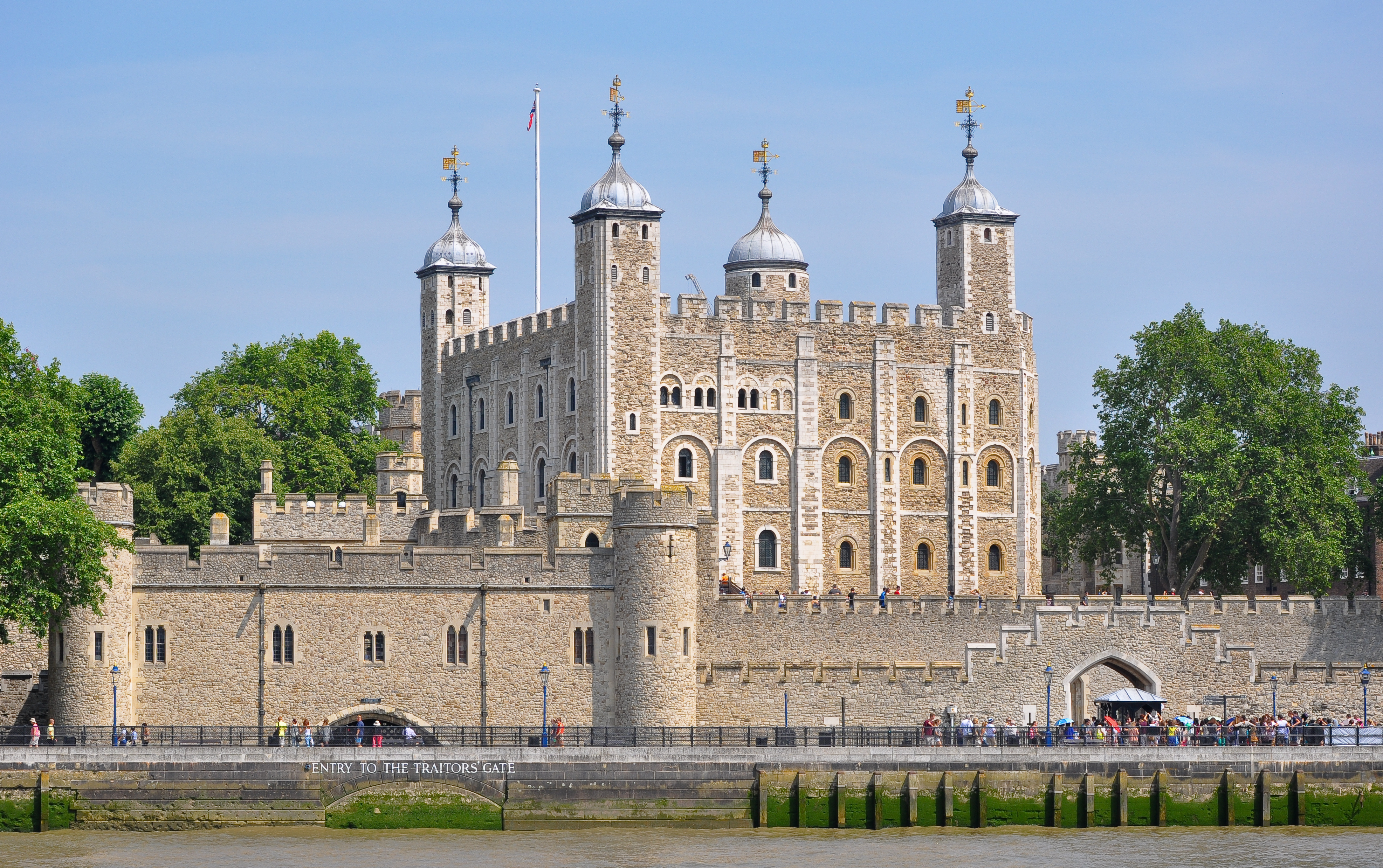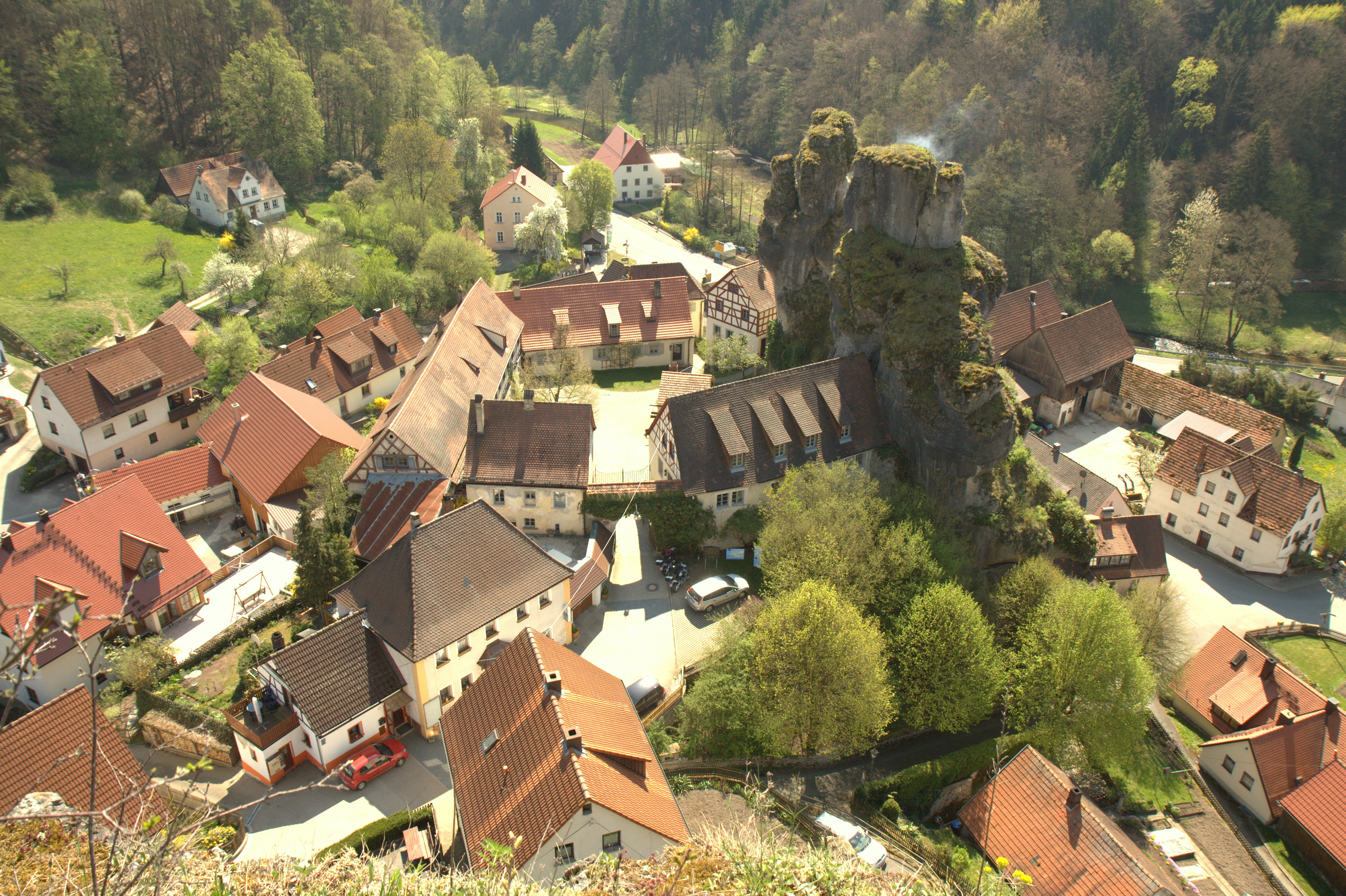|
Schloss Greifenstein
Schloss Greifenstein is a castle in the mountainous Fraconian Switzerland (''Fränkische Schweiz'') region of Upper Franconia, Germany. Since 1691 Greifenstein, the "stone stronghold" of Heiligenstadt round its walls, is the seat of the noble Schenk von Stauffenberg family. Greifenstein is a prominent feature of the modern tourist itinerary called the ''Burgenstraße'' (Castle Road). The Gothic castle that was first noted in 1172 was ruined and pillaged during the Peasants' war of 1524-1525 and was subsequently rebuilt. Then Marquard Sebastian von Schenk von Stauffenberg, Prince-Bishopric of Bamberg, took possession and rebuilt Greifenstein in Baroque style from 1691 to 1693, under the direction of the Bavarian architect Leonhard Dientzenhofer; consequently, as a seat of the bishop it is sometimes called Greifenstein Palais, though the aofficial bishop's palace stood (and still stands) in Bamberg. The Prince-Bishop inscribed over his gate a Latin motto taken from Luke 6:19: ... [...More Info...] [...Related Items...] OR: [Wikipedia] [Google] [Baidu] |
Castle
A castle is a type of fortified structure built during the Middle Ages predominantly by the nobility or royalty and by military orders. Scholars debate the scope of the word ''castle'', but usually consider it to be the private fortified residence of a lord or noble. This is distinct from a palace, which is not fortified; from a fortress, which was not always a residence for royalty or nobility; from a ''pleasance'' which was a walled-in residence for nobility, but not adequately fortified; and from a fortified settlement, which was a public defence – though there are many similarities among these types of construction. Use of the term has varied over time and has also been applied to structures such as hill forts and 19th-20th century homes built to resemble castles. Over the approximately 900 years when genuine castles were built, they took on a great many forms with many different features, although some, such as curtain walls, arrowslits, and portcullises, wer ... [...More Info...] [...Related Items...] OR: [Wikipedia] [Google] [Baidu] |
Franconian Switzerland
Franconian Switzerland (german: Fränkische Schweiz) is an upland in Upper Franconia, Bavaria, Germany and a popular tourist retreat. Located between the River Pegnitz in the east and the south, the River Regnitz in the west and the River Main in the north, its relief, which reaches 600 metres in height, forms the northern part of the Franconian Jura (''Frankenjura''). Like several other mountainous landscapes in the German-speaking lands, e.g. Holstein Switzerland, Märkische Schweiz, or Pommersche Schweiz, Franconian Switzerland was given its name by Romantic artists and poets in the 19th century who compared the landscape to Switzerland. Franconian Switzerland is famous for its high density of traditional breweries. Name The region was once called ''Muggendorfer Gebürg'' ('' Muggendorf hills''). The first tourists arrived during the age of Romanticism. Two law students of Erlangen University, Ludwig Tieck and Wilhelm Heinrich Wackenroder have been credited as "discoverers" ... [...More Info...] [...Related Items...] OR: [Wikipedia] [Google] [Baidu] |
Upper Franconia
Upper Franconia (german: Oberfranken) is a '' Regierungsbezirk'' (administrative 'Regierungs''region 'bezirk'' of the state of Bavaria, southern Germany. It forms part of the historically significant region of Franconia, the others being Middle Franconia and Lower Franconia, which are all now part of the German Federal State of Bayern (''Bavaria''). With more than 200 independent breweries which brew approximately 1000 different types of beer, Upper Franconia has the world's highest brewery-density per capita. A special Franconian beer route (''Fränkische Brauereistraße'') runs through many popular breweries. Geography The administrative region borders on Thuringia (''Thüringen'') to the north, Lower Franconia (''Unterfranken'') to the west, Middle Franconia (''Mittelfranken'') to the south-west, and Upper Palatinate (''Oberpfalz'') to the south-east, Saxony (''Sachsen'') to the north-east and the Czech Republic to the east. History After the founding of the Kingdom o ... [...More Info...] [...Related Items...] OR: [Wikipedia] [Google] [Baidu] |
Heiligenstadt (Upper Franconia)
Heiligenstadt in Oberfranken (officially: Heiligenstadt i. OFr.) is a community with market rights in the Upper Franconian district of Bamberg. The town clusters round the base of Schloss Greifenstein. To further tourism the old school was converted into today's town hall, the historic marketplace was remodelled, and at Easter it is adorned with an Easter fountain. Furthermore, an old barn was converted into a community centre. The community with its houses under memorial protection and its historically interesting church is a well known outing destination. Visitors are especially numerous at Easter when many come to see the Franconian Switzerland’s Easter fountains. The Evangelical ''St.-Veit- und St.-Michaels-Kirche'' (church) goes back to a former tithe barn. The freestanding belltower stands on what is left of a former castle. Unusual for an Evangelical church is the elaborate Baroque painting on the wooden galleries and the panelled ceilings. Geography Heiligenstadt ... [...More Info...] [...Related Items...] OR: [Wikipedia] [Google] [Baidu] |
Stauffenberg
The Schenk von Stauffenberg family is a noble (''Uradel'') Roman Catholic family from Swabia in Germany. The family's best-known recent member was Colonel Claus Schenk Graf von Stauffenberg – the key figure in the 1944 "20 July plot" to assassinate Adolf Hitler. History The recorded history of the Schenk von Stauffenberg family begins in Swabia in the 13th century, when the family, who belonged to the Reichsrittern (Imperial Knights), originated from the settlement Cell, where they owned extensive estates surrounding the village and the Zollerberg. Its first known member is mentioned in 1251 as Wernherus Pincerna de Celle, who in 1255 was appointed to the ceremonial court office of (cup-bearer, sommelier, butler) with the Counts of Zollern. The officeholder was in charge of his lord's wine cellars and vineyards, and when the office of Schenk later became hereditary within the family, the title was adopted into the family name. Surnames were appended according to the ... [...More Info...] [...Related Items...] OR: [Wikipedia] [Google] [Baidu] |
Castle Road
The Castle Road (german: Burgenstraße) is a theme route in southern Germany (in Bavaria and Baden-Württemberg) and a small portion in the Czech Republic, between Mannheim and Prague. It was established in 1954. In 1994 it was possible to extend it to Prague. It leads through the Neckar valley, the Hohenlohe Plateau, the Franconian Heights, Franconian Switzerland, the Fichtelgebirge and the Kaiserwald (Slavkovský les). The Castle Road has a length of over . List of Places The Castle Road at the moment passes, from west to east, the following places and landmarks. * D-Mannheim – Mannheim Palace * D-Schwetzingen – Schwetzingen Castle * D-Heidelberg – Heidelberg Castle, Old Inner City * D-Neckargemünd – Bergfeste Dilsberg * D-Neckarsteinach – Schadeck Castle, Hinterburg Castle, Mittelburg and Vorderburg * D-Hirschhorn (Neckar) – Hirschhorn Castle * D- Eberbach – Eberbach Castle * D- Zwingenberg - Zwingenburg * D- Neckargerach - Minneburg * D-Binau - Dauchstein ... [...More Info...] [...Related Items...] OR: [Wikipedia] [Google] [Baidu] |
German Peasants War Of 1524-1525
The German Peasants' War, Great Peasants' War or Great Peasants' Revolt (german: Deutscher Bauernkrieg) was a widespread popular revolt in some German-speaking areas in Central Europe from 1524 to 1525. It failed because of intense opposition from the aristocracy, who slaughtered up to 100,000 of the 300,000 poorly armed peasants and farmers. The survivors were fined and achieved few, if any, of their goals. Like the preceding Bundschuh movement and the Hussite Wars, the war consisted of a series of both economic and religious revolts in which peasants and farmers, often supported by Anabaptist clergy, took the lead. The German Peasants' War was Europe's largest and most widespread popular uprising before the French Revolution of 1789. The fighting was at its height in the middle of 1525. The war began with separate insurrections, beginning in the southwestern part of what is now Germany and Alsace, and spread in subsequent insurrections to the central and eastern areas of Ge ... [...More Info...] [...Related Items...] OR: [Wikipedia] [Google] [Baidu] |
Marquard Sebastian Von Schenk Von Stauffenberg
Marquard Sebastian Schenk von Stauffenberg (14 May 1644–9 Oct 1693, aged 49) was the Prince-Bishop of Bamberg from 1683 to 1693. Biography Marquard Sebastian Schenk von Stauffenberg was born in Eichstätt on 14 May 1644. He became a canon of Bamberg Cathedral, Würzburg Cathedral, and Augsburg Cathedral. On 10 June 1683 he was elected Prince-Bishop of Bamberg. Pope Innocent XI confirmed his appointment on 2 September 1686. He was ordained as a priest and consecrated as a bishop by Stephan Weinberger, auxiliary bishop of Augsburg, on 6 April 1687. He received Schloss Greifenstein and rebuilt it in Baroque style, 1691–93, employing the Bavarian architect Leonhard Dientzenhofer. He also commissioned the building of Schloss Seehof Schloss Seehof is a ''Schloss'' (palace) in Memmelsdorf, Bamberg, Germany. It was built from 1684 to 1695 as a summer residence and hunting lodge for Marquard Sebastian Schenk von Stauffenberg, Prince-bishop of Bamberg. Location Schloss Seeh ... [...More Info...] [...Related Items...] OR: [Wikipedia] [Google] [Baidu] |
Prince-Bishopric Of Bamberg
The Prince-Bishopric of Bamberg (german: Hochstift Bamberg) was an ecclesiastical State of the Holy Roman Empire. It goes back to the Roman Catholic Diocese of Bamberg established at the 1007 synod in Frankfurt, at the behest of King Henry II to further expand the spread of Christianity in the Franconian lands. The bishops obtained the status of Imperial immediacy about 1245 and ruled their estates as Prince-bishops until they were subsumed to the Electorate of Bavaria in the course of the German Mediatisation in 1802. State The Bishops of Bamberg received the princely title by Emperor Frederick II of Hohenstaufen before his deposition by Pope Innocent IV in 1245, whereby the diocese became an Imperial state, covering large parts of the current Bavarian region of Franconia ("Main Franconia"). Part of the Franconian Circle (territories grouped together within the Holy Roman Empire for defensive purposes) from 1500 onwards, the Bamberg territory was bordered, among oth ... [...More Info...] [...Related Items...] OR: [Wikipedia] [Google] [Baidu] |
Baroque Architecture
Baroque architecture is a highly decorative and theatrical style which appeared in Italy in the early 17th century and gradually spread across Europe. It was originally introduced by the Catholic Church, particularly by the Jesuits, as a means to combat the Reformation and the Protestant church with a new architecture that inspired surprise and awe. It reached its peak in the High Baroque (1625–1675), when it was used in churches and palaces in Italy, Spain, Portugal, France, Bavaria and Austria. In the Late Baroque period (1675–1750), it reached as far as Russia and the Spanish and Portuguese colonies in Latin America. About 1730, an even more elaborately decorative variant called Rococo appeared and flourished in Central Europe. Baroque architects took the basic elements of Renaissance architecture, including domes and colonnades, and made them higher, grander, more decorated, and more dramatic. The interior effects were often achieved with the use of '' quadratura ... [...More Info...] [...Related Items...] OR: [Wikipedia] [Google] [Baidu] |
Leonhard Dientzenhofer
Leonhard Dientzenhofer (also: ''Johann Leonhard Dientzenhofer''; 20 February 1660 – 26 November 1707) was a German builder and architect from the well known Dientzenhofer family of architects. Life and Work Leonhard was born in St. Margarethen (Bavaria), District of Rosenheim, the seventh child of Georg Dientzenhofer and Anna Thanner. His four brothers, Georg, Wolfgang, Christoph and Johann, were also well-known architects/builders. On 30 January 1685 in Waldsassen, he married Maria Anna Hager, a sister of the wife of his brother Georg. They had three sons and four daughters. Soon after the death of his wife Maria (6 July 1699), he married in Bamberg Anna Margaretha Sünder from Staffelstein. They had two daughters. In 1697 he commissioned a reprint (with changed dedication and foreword) of the book ''Theatrum architecturae civilis'' by Charles Philippe Dieussart. Leonhard died, aged 47, in Bamberg. His work on Banz Abbey was taken over by his brother Johann. Works ... [...More Info...] [...Related Items...] OR: [Wikipedia] [Google] [Baidu] |






